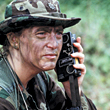Radio Modernization Broadcasts New Market Opportunities

The government's new program to squeeze more channels from its allotment of radio spectrum will generate up to $1 billion worth of opportunities for five companies.
The government's new program to squeeze more channels from its allotment of radio spectrum will generate up to $1 billion worth of opportunities for five companies. "We're trying to make it a lot easier for agencies to think big," said Brent Lehman, operations manager for the Army's Base Radio Systems program.Five companies, including wireless heavyweights such as M/A-COM and Motorola Inc., as well as systems integrator Booz-Allen & Hamilton Inc., were selected Sept. 28 for the 10-year contract. The contract is being managed by the Army Communications-Electronics Command, Fort Monmouth, N.J. The other winning companies are E.F. Johnson Co. and Engineered Systems Inc.Under the indefinite delivery, indefinite quantity contract, the companies will compete for task orders not only from the Army, but also from all federal agencies to provide modern land mobile radio systems, equipment and services. Lehman said this contract offers a wider variety of land mobile radio systems than its previous iteration, a five-year, single-source contract called the Base Support Trunked Radio System held by the Schaumburg, Ill.-based Motorola. The new contract also offers the chance to implement larger systems and to make those systems interoperable, Lehman said. Most importantly, the contract provides a means for all federal agencies to obtain land mobile radio systems that comply with policies set by the National Telecommunications Information Association, a part of the Department of Commerce that regulates federal government use of the radio spectrum. Under new federal guidelines, radio systems that now use wideband channels ? those with a 25 kilohertz spectral width ? must be converted to "narrowband" channels, which are approximately 12.5 kilohertz wide. This will require "total swap out of equipment," said Lehman, adding that most agency systems will need to be converted.According to Kevin Fleming, director of federal programs for M/A-COM Wireless, a M/A-COM unit of Tyco International Ltd., Pembroke, Bermuda, the contract's flexibility is its chief appeal. M/A-COM actually won two different spots on the contract, one for its own bid, and the other through Com-Net Ericsson Critical Radio Systems, which it acquired in July.Fleming said the previous contract allowed for only one type of land mobile system, namely trunked systems, which have multiple frequency voice and data channels. "Trunked is more convenient when you have more users. It's more efficient. The problem is there were large portions of the military and other federal users that could not use trunked systems," Fleming said.The new contract widens the scope for simple two-way systems as well. Fleming expects task orders to range in value from a few hundred thousand dollars for smaller systems to $40 million or beyond. Large orders may be increasingly common as many agencies look to regionalize their systems, Fleming said. Joe Cecere, Motorola's operations manager for the Base Radio Systems program, agreed that opening the contract up to non-trunked systems was a good idea. "We'll be able to do not only trunked systems but conventional systems, site support, anything to do with any sort of wireless communications," Cecere said. Lehman said another limiting factor of the previous contract was that it was restricted in geographical scope to federal agencies within the continental United States."That completely shut out a lot of needs the Defense Department had in Southeast Asia and in the Bosnia-Kosovo area," he said.Fostering interoperability is a big part of the contract as well. Even before the Sept. 11 terrorist attacks, interoperability among public safety wireless systems had been a focus of agencies. In 1994, then-Vice President Al Gore's National Performance Review IT initiative launched the Public Safety Wireless Network program, an effort initiated to foster interoperability among wireless networks."When you have a disaster, it's not one agency that responds. You have six agencies with six radio systems. So there has been a cry for interoperability," Lehman said. "In the Oklahoma City bombing, you had the Oklahoma City Fire Department radio system trying to communicate with the FBI radios system. There was gridlock," he said. "All they care about is when the site commander wants to start communicating with everyone, that he can talk to everyone without having somebody holding two radios up to their head at one time."Such complex coordination has opened a new opportunity for the McLean, Va.-based Booz-Allen, which has participated in the Public Safety Wireless Network program."This has gone from a single-vendor contract to a multiple-vendor contract. With more choices, we see more of a need for someone to come in and offer guidance. We think we can be objective, where we have no vested interest in providing any hardware whatsoever," said Booz-Allen Vice President Ron Hodge.Booz-Allen will offer consulting and architectural design, a role Hodge said is increasingly necessary for the contract's wider scope. "The old contract was very turnkey oriented. It was provisioned for a single solution. People would buy their equipment and would be done," Hodge said. "Now they can think through their system architecture, about security, the physical diversity of their assets. Here's an opportunity to help agencies be thoughtful about what they purchase and how it will work with other communities." Hodge wouldn't estimate how much Booz-Allen expects to see from this contract vehicle; however, he noted the planning, designing and testing components to new systems generally run about 7 percent to 10 percent of total costs.Like some of the other vendors, Booz-Allen expects to subcontract some of the work. "With our contract, we're allowed for something called flexible subcontracting," said Hodge. "We already have a tremendous bench strength already, but that's not to say we'll be able to service every need in-house."XXXSPLITXXX-XXXSPLITXXX-Land mobile radio systems, also called base radio systems, are the portable and mobile radios used by police departments, emergency services, the military and federal agencies, such as the National Park Service and the Federal Bureau of Prisons. "If you get pulled over by a cop, and he gets on his mobile radio with his dispatcher, that's a land mobile system," said Kevin Fleming, director of federal programs for M/A-COM Wireless.Land mobile radio systems may include conventional two-way systems; trunked systems, which use multiple frequencies; and mobile dispatch systems, which can multicast messages across different frequencies. Increasingly, public-safety systems are becoming digitized, thanks to standards created by the U.S. Association of Public Safety Communications Officers. Digital transmission uses radio spectrum more efficiently, allows for greater security and enables a wider range of data services, such as messaging. Although commercial cellular phone systems fall in the category of land mobile systems, state and local public safety services as well as federal law enforcement mobile units may require dedicated networks to ensure high levels of reliability in adverse conditions. "You can't depend on cell phones, because they can get very busy in peak situations. Base radio systems can guarantee [that users] will always get through," said Joe Cecere, program manager for the Base Radio Systems program of Motorola Inc.An agency of the Department of Commerce, the National Telecommunications Information Association regulates federal agency use of radio spectrum, while the Federal Communications Commission manages state and local government use as well as commercial use in the United States.


Five companies will be competing to bring modern radio systems to the military and federal civilian agencies.
| Name | Location | Program Category* |
| Booz-Allen & Hamilton Inc. | McLean, Va. | III |
| E.F. Johnson Co. | Waseca, Minn. | I & II |
| Engineered Systems Inc. | Omaha, Neb. | I & III |
| M/A-COM Inc. | Lowell, Mass. | I, II & III |
| Motorola Inc. | Schaumburg, Ill. | I, II & III |
| *Program Categories: Category I: Entire mobile radio systems design and implementation (turnkey solutions), expansions or upgrades
| ||
| Source: Army Base Radio Systems Program (www.monmouth.army.mil/smc/brs/index.html) | ||
NEXT STORY: Ga. Readies $2B Outsourcing Project